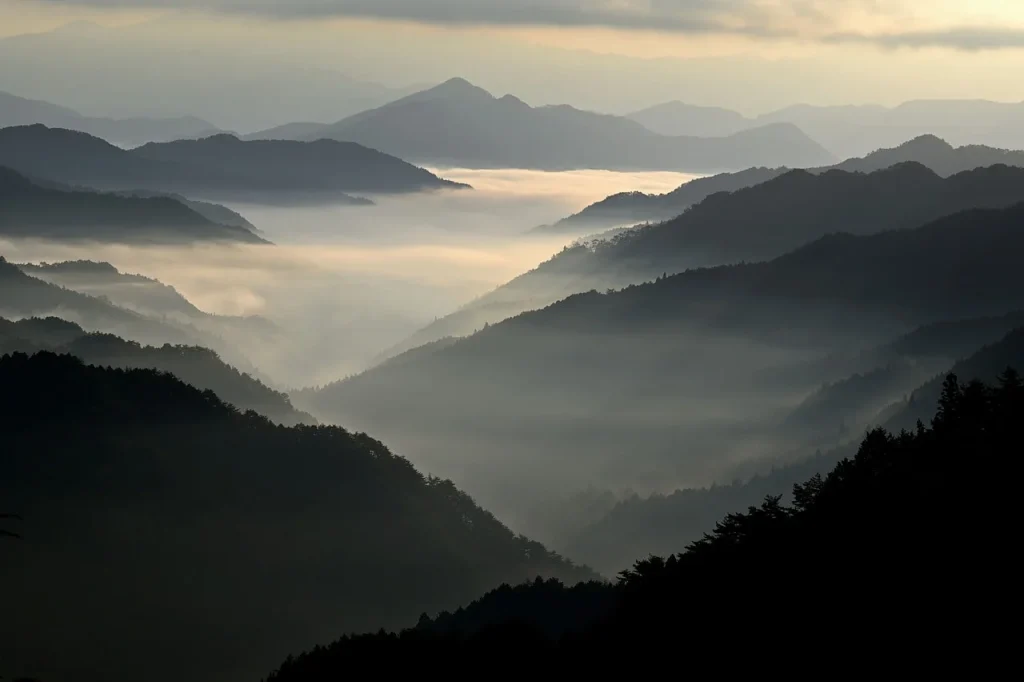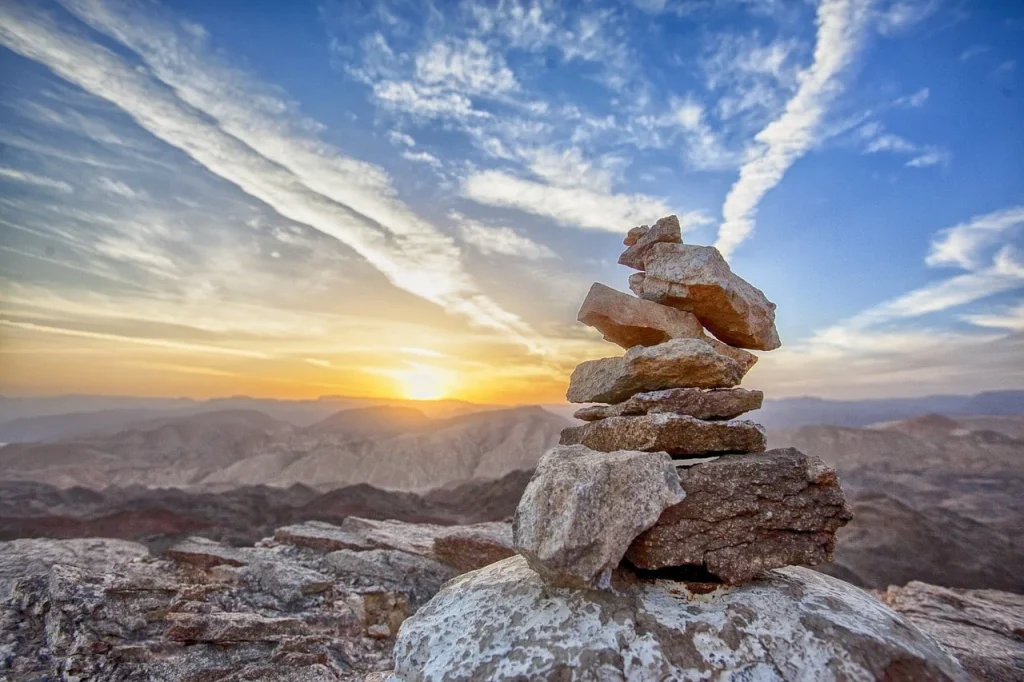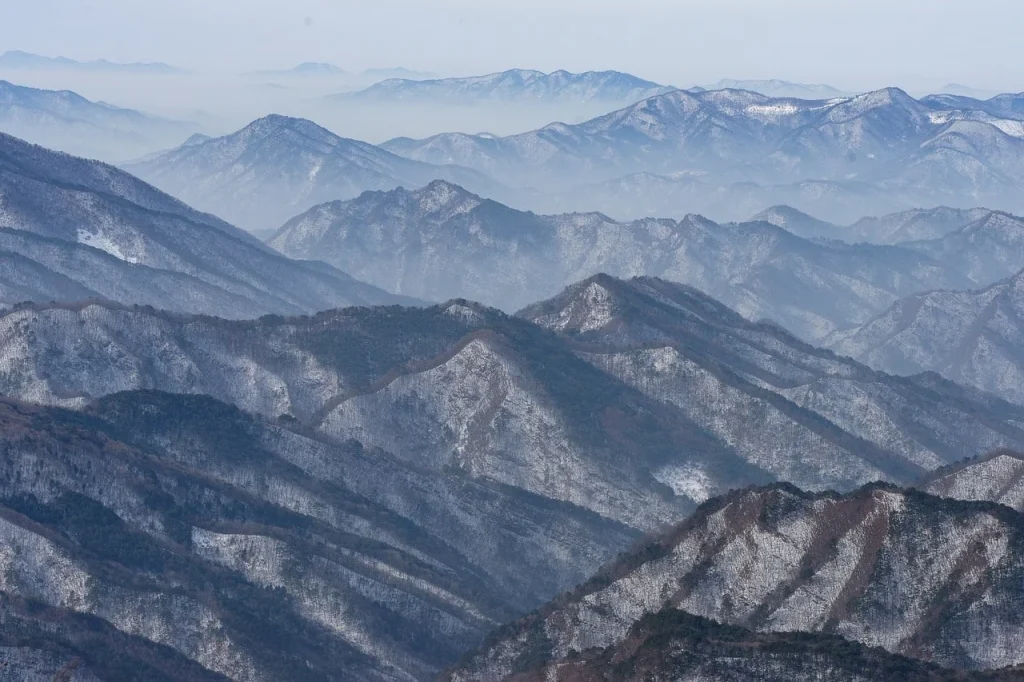Welcome to the majestic world of mountains, where the air is fresh, the views are breathtaking, and the hikes can make your legs feel like they’ve run a marathon—even if it’s just to the fridge and back!
Mountains aren’t just the Earth’s way of showing off; they are a vital part of our planet’s ecosystem and hold many secrets just waiting to be explored. From towering peaks that touch the clouds to hidden valleys that treasure ancient mysteries, mountains are nature’s ultimate adventure playground.
The mountains are calling, and I must go.
John Muir
Mountain Facts
Before you dive into the fascinating world of mountains, keep in mind that there’s a quiz waiting at the end of this article. Read carefully to show off your hiking mastery!
- Olympus Mons on Mars is the tallest planetary peak in our solar system, nearly three times the height of Everest.
- The Andes, extending over 7,000 kilometers, are the longest continental mountain range in the world.
- Vinson Massif in Antarctica is the most remote peak on Earth, far from any civilization.
- Mauna Kea, measured from its base beneath the ocean to its peak, is technically the tallest mountain on Earth, surpassing Everest.
- The Himalayas are still growing about 1 centimeter per year due to tectonic plates colliding.
- Mount Everest has a different name in Nepal: Sagarmatha, meaning “forehead in the sky.”
- Underwater mountain ranges, like the Mid-Atlantic Ridge, are longer than any ranges on land.
- The term “orogeny” refers to processes that form mountain ranges.
- Some mountains are known to sing, a phenomenon caused by wind passing through their valleys.
- K2 has a higher fatality rate than Everest, making it one of the most dangerous peaks to climb.
- The Rockies are over 300 million years older than the much younger Andes.
- Plateaus are often mistaken for mountains but are actually an elevated area flattened on top.
- Zhangjiajie in China, famous for inspiring the floating mountains in the movie Avatar, has peaks that are remnants of ancient eroded mountains.

- Aconcagua in Argentina is not only the highest peak outside Asia but also the highest point in both the Southern and Western Hemispheres.
- The Alps move about 1 millimeter to the north each year.
- Mountains cover approximately 22% of the earth’s land surface.
- The water that Denver depends on is predominantly from the snowmelt of the Rocky Mountains.
- Lenticular clouds, which are often mistaken for UFOs, commonly form at high altitudes above peaks.
- The first confirmed ascent of Mount Everest was in 1953 by Edmund Hillary and Tenzing Norgay.
- The Pyrenees mountains form a natural border between Spain and France.
- Glacial erosion can form sharply pointed peaks known as horns.
- The oldest known mountains, the Barberton Greenstone Belt in South Africa, are over 3.5 billion years old.
- Volcanic mountains can grow back rapidly post-eruption, reshaping their structure within decades.
- Lightning strikes are significantly more common in mountainous areas due to their elevated height and isolated peaks.
- The “Death Zone” in mountaineering refers to altitudes above 8,000 meters where oxygen is insufficient for human survival.
- Trees cannot grow above the timberline due to cold temperatures and high winds.
- The Andean condor, which relies on mountain updrafts, is one of the largest birds capable of flight.
- Mount Kilimanjaro is unique due to its free-standing formation, towering over the surrounding savannah.

- Mount Elbrus is often considered the highest peak in Europe and is part of the Caucasus Range, which acts as a border between Europe and Asia.
- The fastest ascent of Everest took just 8 hours and 10 minutes by a Sherpa climber.
- The Appalachian Mountains are among the oldest in the world, and have been worn down by erosion over time, making them much shorter than they once were.
- The Sierra Nevada range includes the largest tree on Earth, the giant sequoia.
- Isostasy describes the balance of the weights of rocky masses within Earth’s crust, which is crucial for maintaining the heights of mountains.
- Fog often forms in mountainous regions due to rapid air cooling.
- The temperature drops by about 6.5 degrees Celsius for every 1,000 meters you ascend.
- Mount Fuji, a symbol of Japan, is an active volcano that last erupted in 1707.
- The first mountains likely formed when Earth’s crust was pushed up due to impacts from meteorites.
- Wind erosion can create spectacular rock formations known as hoodoos found in high regions.

- The Hindu Kush range, affecting local climates, has been a crucial barrier to invasions in South Asian history.
- Cave systems within mountains have created some of the longest and deepest caves in the world.
- The Greater Himalayas are known for containing most of the Earth’s highest peaks, including all 14 over 8,000 meters.
- Mountains can affect the climate of nearby areas by blocking air movement, which leads to rain shadow effects on the leeward side.
- The International Space Station orbits Earth at an altitude approximately 100 times higher than the summit of Everest.
- Mountains can form as a result of volcanic activity, sedimentary layering, or the folding and faulting of the Earth’s crust.
- Many of the world’s major rivers, including the Yangtze, start in mountainous regions.
- Mountains influence biodiversity through isolation and habitat variation, contributing to high levels of endemism.
- High-altitude cooking requires adjustments in temperature and cooking time due to reduced atmospheric pressure.
- Antarctica is the highest continent on average, due to the thickness of ice covering it.
- The Japanese practice of forest bathing, or shinrin-yoku, often takes place in mountainous regions and is believed to have numerous health benefits.
- The mountains are home to nearly 10% of the world’s population.
Mountain Myths

As we climb further into our journey, let’s pause to distinguish the solid facts from the swirling myths.
- Mountains Grow Forever
They are not in a continuous state of growth; their height can be limited by the forces of erosion and weathering, which often counteract the uplift from tectonic activity. - The Tallest Mountain is Everest
While Mount Everest boasts the highest altitude above sea level, the tallest mountain from base to summit is actually Mauna Kea in Hawaii, with most of its height lying below the ocean surface. - Mountains Only Form at Plate Boundaries
They can also be formed far from plate boundaries due to processes like volcanic activity or the uplift of large blocks of the Earth’s crust by geological faults. - Mountains Are Solid and Unchanging
Contrary to this belief, they are dynamically shaped by elements such as wind, water, ice, and shifting tectonic plates, making them ever-evolving rather than static. - All Mountains Have Pointed Peaks
Many mountains are characterized by rounded or flat-topped peaks, known as plateaus. The shape of a mountain’s peak is largely influenced by the local climate and the mountain’s geological history.
No products found.
Mountain Quotes

Below, you will find some of my favorite quotes about mountains. Feel free to share yours in the comments so I can add them to the list as well.
It is not the mountain we conquer, but ourselves.
Sir Edmund Hillary
Sir Edmund Hillary, the first confirmed climber to reach the summit of Mount Everest, reflects on the personal growth and inner challenges faced by mountaineers.
Climb the mountains and get their good tidings.
John Muir
In this quote, John Muir encourages embracing the natural world, particularly mountains, for the peace and wisdom they impart.
Mountains are not fair or unfair, they are just dangerous.
Reinhold Messner
Reinhold Messner, one of the most renowned mountaineers, highlights the neutral but perilous nature of mountains in this straightforward assertion.
You are not in the mountains. The mountains are in you.
John Muir
Again, John Muir eloquently captures the profound and transformative impact that mountains have on those who connect with them.
Mountains teach that not everything in this world can be rationally explained.
Aleksander Lwow
Aleksander Lwow, a philosopher and mountaineer, speaks to the mystical and sometimes inexplicable experiences that mountains offer to those who venture into them.
Mountain FAQ

Keep the momentum going as we transition from those powerful mountain quotes to our FAQ section. This is your last chance to gear up before the quiz, so make sure you understand each question.
- Are mountains volcanoes?
Not all mountains are volcanoes. They can form through various geological processes, such as tectonic plates crashing or sliding past each other. Volcanic mountains form specifically from volcanic activity, where magma erupts through the crust and piles up. - How are mountains formed?
They are primarily formed through the movements of the Earth’s tectonic plates. When these plates collide, they can push the Earth’s crust upward, forming mountains. Other types of mountains can form through volcanic activity or as the result of erosion. - Can mountains grow?
Yes, they can grow. As tectonic plates continue to move, they can push mountains gradually higher. However, this growth is often counteracted by erosion, which wears the mountains down over time. - Can mountains affect the climate?
Yes, they significantly influence the climate of their regions. They can block the flow of air masses, causing different weather patterns on their windward and leeward sides. This effect creates microclimates and is responsible for phenomena like the rain shadow effect, where one side of a mountain receives much less rain. - How old are the oldest mountains?
Some of the oldest mountains in the world are the Archean mountains, parts of which are over 2.5 billion years old. However, most of the visible parts of these ancient ranges have been heavily eroded over time. More recognizable old ranges, like the Appalachians in North America, are around 480 million years old.
No products found.
Mountain Trivia

Welcome to our towering mountain quiz! Get ready to scale the heights of trivia. And remember, if you don’t get any questions right, we’ll assume you’re still stuck at base camp!
Mountain Merch
If you are a true fan of mountains (and cats), then you definitely need to check out our merchandise. You can find T-shirts, hoodies, mugs, and tote bags for your favorite designs. Feel free to check out all the other designs in our shop.
Conclusion
We’ve reached the summit of our journey, learning how these majestic formations impact climate, wildlife, and even human culture. Mountains teach us about resilience and the beauty of the natural world.
As we wrap up, let’s keep exploring and respecting these towering treasures. Speaking of which, if you were a mountain, which animal would you want roaming your slopes? Let me know in the comments.


